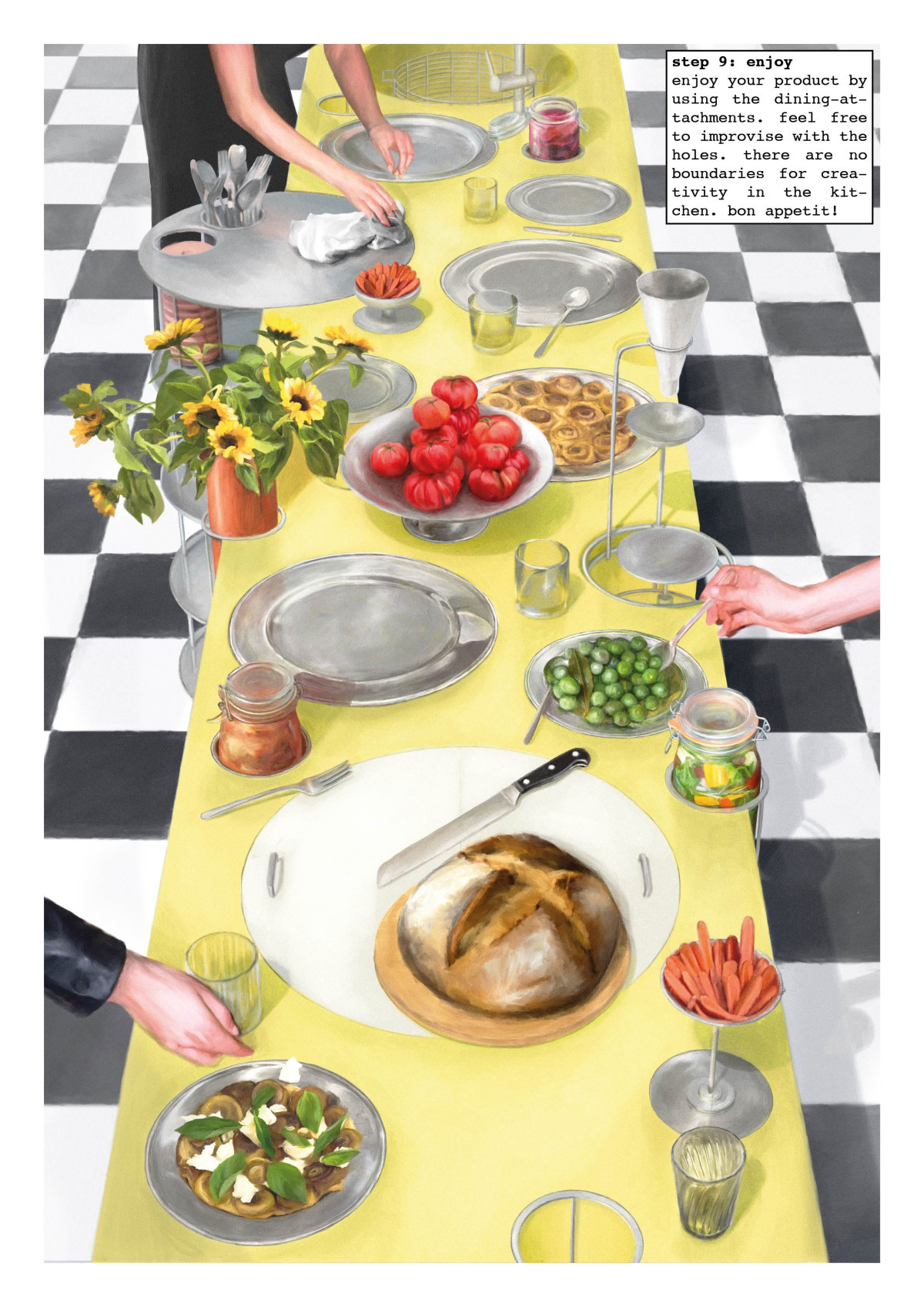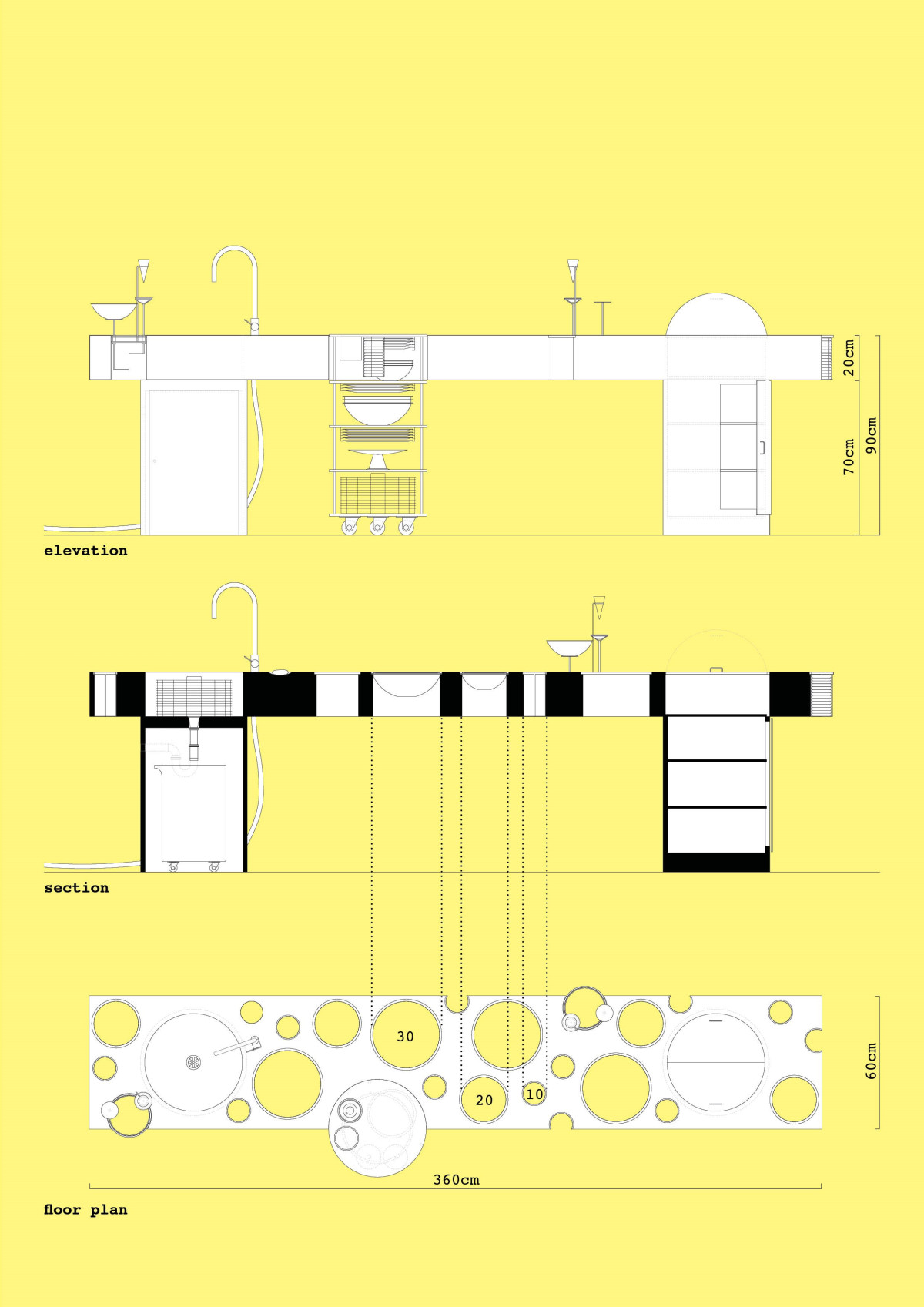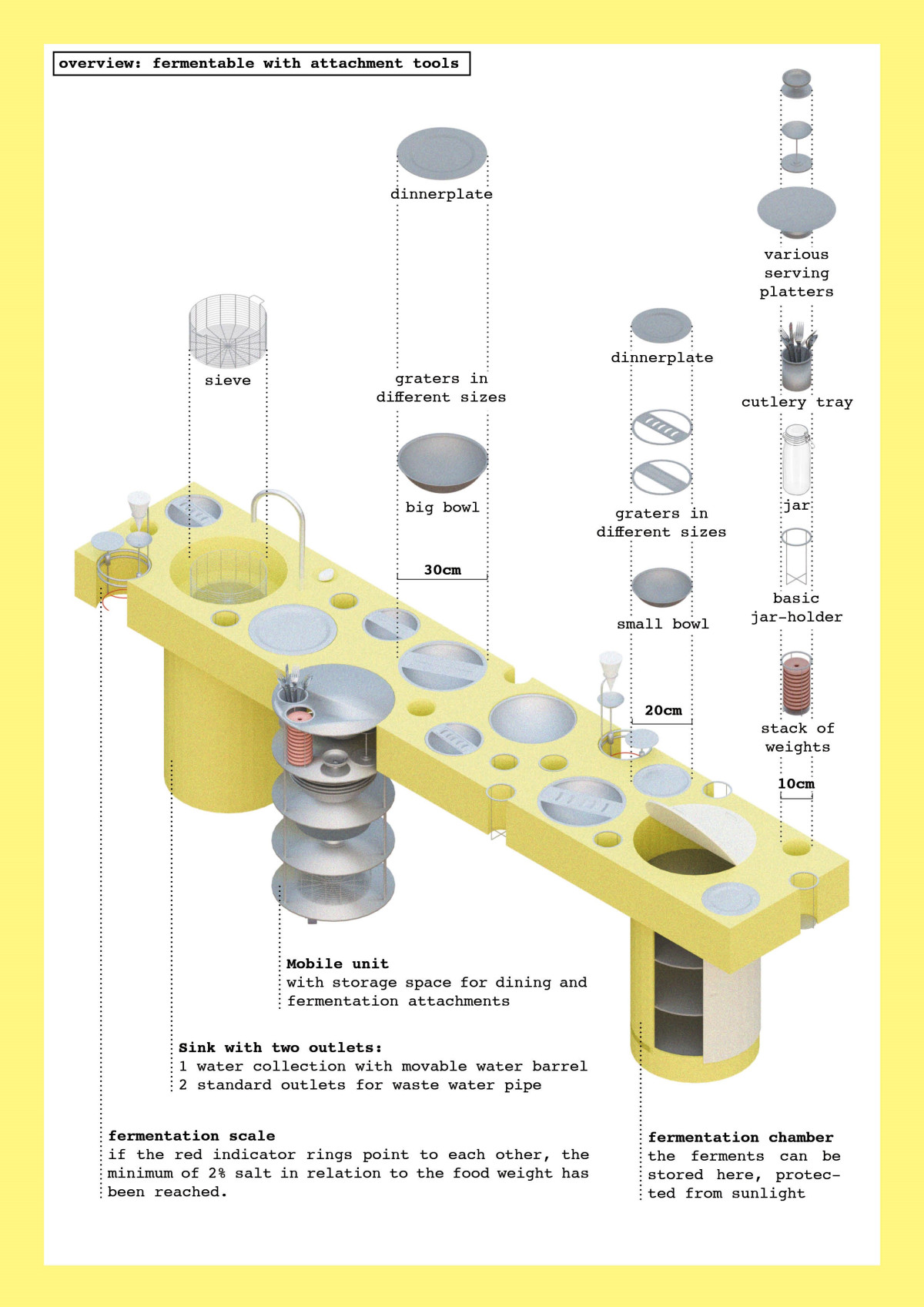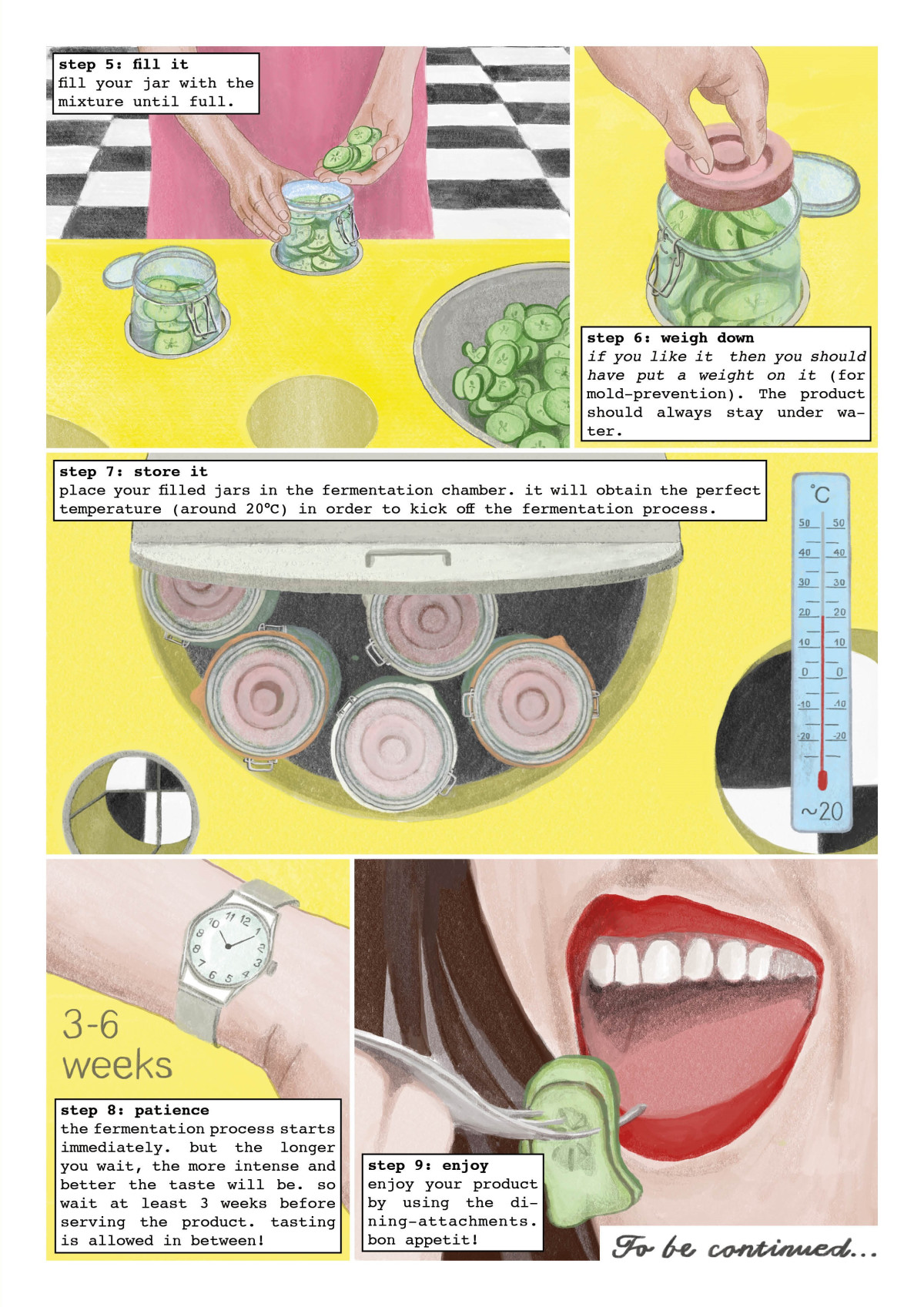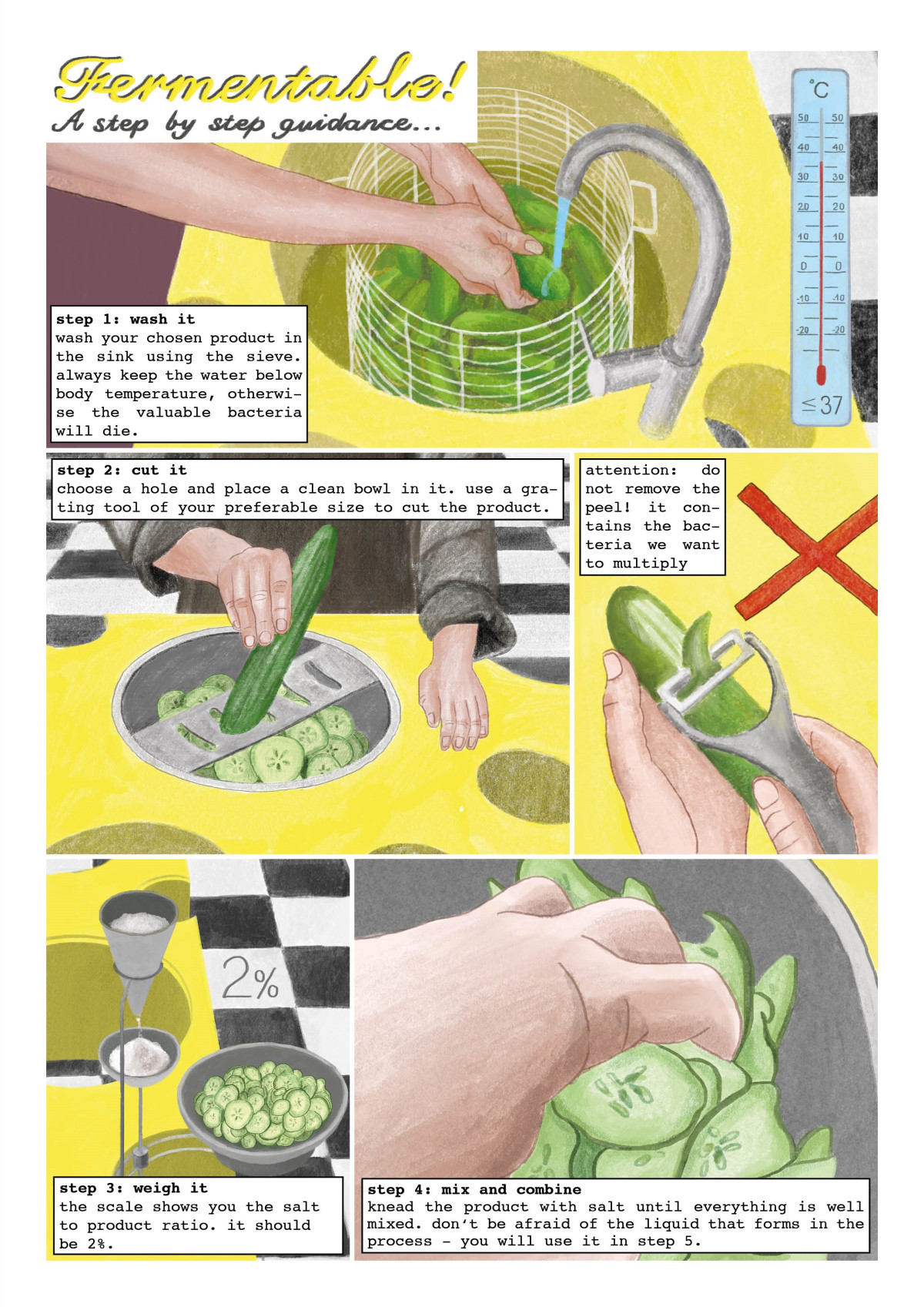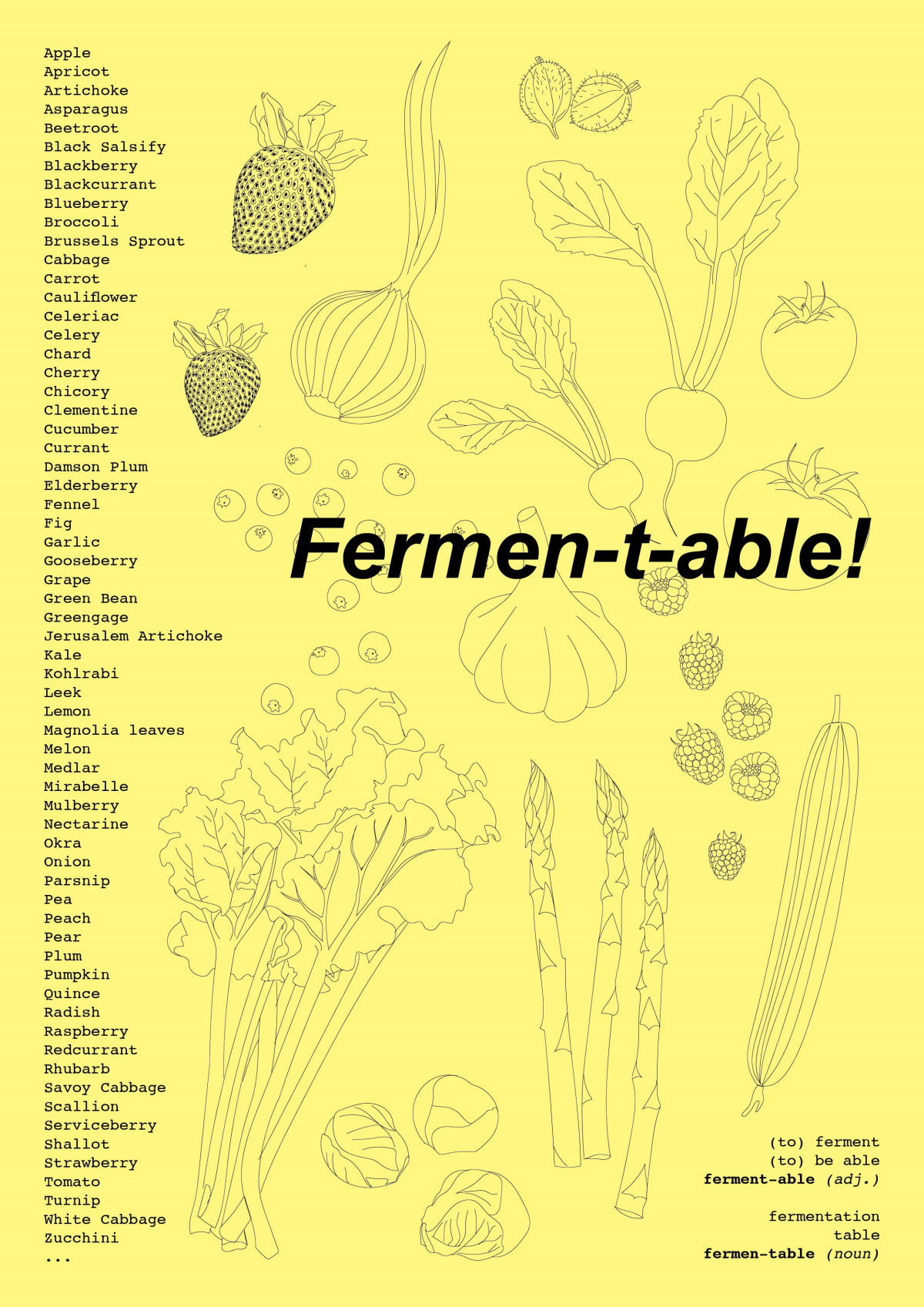Jurybegründung
Fermen-table von Hannah Lisa Ehre und Marlene Theresa Koßmann überzeugt durch seine treffende Auseinandersetzung mit Fragen der Ernährung, Gesundheit und Umwelt für die Zukunft unserer Gesellschaften.
Das Projekt
(to) ferment
(to) be able
ferment-able (adj.)
fermentation
table
fermen-table (noun)
A dream kitchen
Our interpretation of a dream kitchen is an experimental space requiring minimal resources and bringing us closer to the playful nature of food preservation methods like fermentation. With the ‚Fermen-t-able’ we want to emphasize the joy of preparing food, eating together and talking about it; sharing recipes, ingredients, techniques.
What is fermentation?
Fermentation is an ancient culinary practice passed down through generations worldwide, enhancing nutritions and incredible flavors of (surplus) food. Many countries have their traditional ferments, such as bread, yogurt, cheese, sauerkraut, and wine; garum from Rome; kimchi from Korea; and rakfisk from Norway. These delicacies originated from the need to preserve food without refrigeration. Today, food preparation typically relies on heat, which depletes nutrients and flavor, consumes resources, and still contributes to waste. Onethird of the world's food production is discarded annually. Our current food system, based on excessive consumer behavior, is exploiting our soils. Let’s use what we produce, relearn traditional food practices like fermentation and raise awareness of the products that we consume!
Let’s bring it to the Fermen-t-able
The Fermen-t-able is not an ordinary culinary setup; it is both a fermenting kitchen as well as a shared dining table that brings a colorful variety of
dishes and ferments to the center at the end of the day. It fosters a collective, hands-on experience, bringing people closer to the products they
consume.
The proposal, designed as a freestanding object needs only an access to cold water and can be placed anywhere - whether in the parking lot behind the nearest supermarket, on a neighborhood market square, or as the centerpiece of a community kitchen in a residential building.
Within the table there come specific attachment tools that can be stored in a mobile unit, allowing it to function as a fermentation kitchen, a dining table, or both. Beside graters, plates, cutlery and bowls, there is a specific scale that shows the right ratio of salt compared to the product (2%). The processed products can be put into a destined fermentation chamber. Additionally, the wastewater from the sink can be collected in a movable barrel and further used to water plants.
Crafted from a single mold, epoxy or synthetic resin is used, which is extremely durable, impact- and scratch-resistant, and long-lasting - ideal for kitchen surfaces in public spaces. Moreover, the material is easy to maintain, weatherproof, and heat-resistant.
In today's fast-paced world, people spend less time in the kitchen, cook less, and continuously seek to optimize time and culinary practices. This relentless pursuit of efficiency contrasts with the slow, deliberate practice of
fermentation. As architects, we are also subject to efficiency mechanisms. Therefore, we experiment playfully with the design and drawings of the Fermen-table as a sustainable, future-ready response to an unchanging food policy and practice, despite ongoing discussions.
The Fermen-t-able serves as a readable guide. It is created to leave no questions unanswered and provide space for experimentation.
Biografie
Hannah Lisa Ehre und Marlene Theresa Kossmann sind zwei Freundinnen, die durch Design und kulinarische Genüsse miteinander verbunden sind. Neben ihrem Studium und ihrer Arbeit im Bereich Architektur betreiben sie seit Kurzem ein transnationales Catering-Studio, das an der Schnittstelle von Kunst, Szenografie, Kochen und Essen agiert. Ihr Motto lautet: Mit Essen darf gespielt werden! Es gibt nur eine Bedingung: Am Ende muss alles verzehrt werden.



